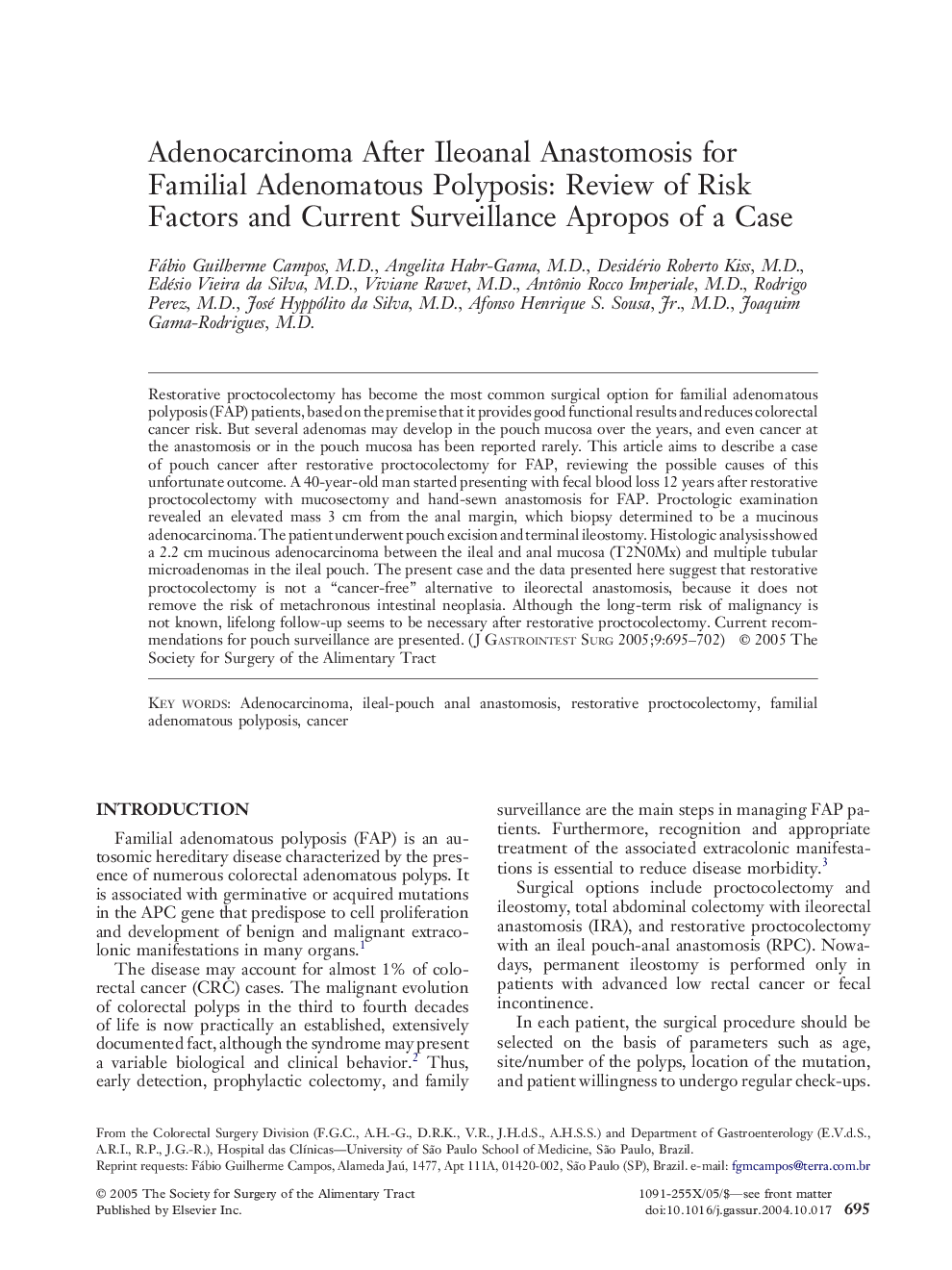| Article ID | Journal | Published Year | Pages | File Type |
|---|---|---|---|---|
| 9401319 | Journal of Gastrointestinal Surgery | 2005 | 8 Pages |
Abstract
Restorative proctocolectomy has become the most common surgical option for familial adenomatous polyposis (FAP) patients, based on the premise that it provides good functional results and reduces colorectal cancer risk. But several adenomas may develop in the pouch mucosa over the years, and even cancer at the anastomosis or in the pouch mucosa has been reported rarely. This article aims to describe a case of pouch cancer after restorative proctocolectomy for FAP, reviewing the possible causes of this unfortunate outcome. A 40-year-old man started presenting with fecal blood loss 12 years after restorative proctocolectomy with mucosectomy and hand-sewn anastomosis for FAP. Proctologic examination revealed an elevated mass 3 cm from the anal margin, which biopsy determined to be a mucinous adenocarcinoma. The patient underwent pouch excision and terminal ileostomy. Histologic analysis showed a 2.2 cm mucinous adenocarcinoma between the ileal and anal mucosa (T2N0Mx) and multiple tubular microadenomas in the ileal pouch. The present case and the data presented here suggest that restorative proctocolectomy is not a “cancer-free” alternative to ileorectal anastomosis, because it does not remove the risk of metachronous intestinal neoplasia. Although the long-term risk of malignancy is not known, lifelong follow-up seems to be necessary after restorative proctocolectomy. Current recommendations for pouch surveillance are presented.
Related Topics
Health Sciences
Medicine and Dentistry
Surgery
Authors
Fábio Guilherme M.D., Angelita M.D., Desidério Roberto M.D., Edésio Vieira M.D., Viviane M.D., Antônio Rocco M.D., Rodrigo M.D., José Hyppólito M.D., Afonso Henrique S. M.D., Joaquim M.D.,
